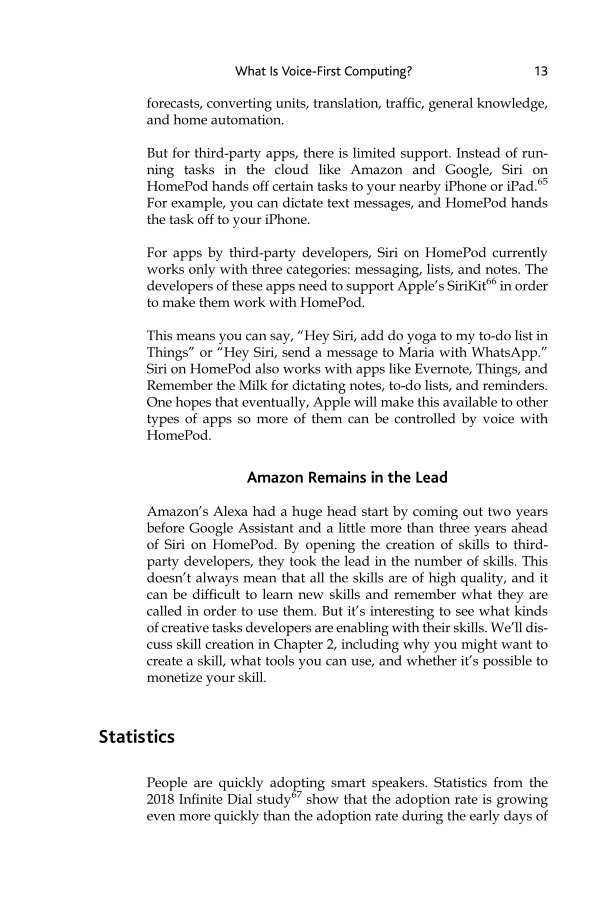forecasts, converting units, translation, traffic, general knowledge, and home automation. But for third-party apps, there is limited support. Instead of run- ning tasks in the cloud like Amazon and Google, Siri on HomePod hands off certain tasks to your nearby iPhone or iPad.65 For example, you can dictate text messages, and HomePod hands the task off to your iPhone. For apps by third-party developers, Siri on HomePod currently works only with three categories: messaging, lists, and notes. The developers of these apps need to support Apple’s SiriKit66 in order to make them work with HomePod. This means you can say, “Hey Siri, add do yoga to my to-do list in Things” or “Hey Siri, send a message to Maria with WhatsApp.” Siri on HomePod also works with apps like Evernote, Things, and Remember the Milk for dictating notes, to-do lists, and reminders. One hopes that eventually, Apple will make this available to other types of apps so more of them can be controlled by voice with HomePod. Amazon Remains in the Lead Amazon’s Alexa had a huge head start by coming out two years before Google Assistant and a little more than three years ahead of Siri on HomePod. By opening the creation of skills to third- party developers, they took the lead in the number of skills. This doesn’t always mean that all the skills are of high quality, and it can be difficult to learn new skills and remember what they are called in order to use them. But it’s interesting to see what kinds of creative tasks developers are enabling with their skills. We’ll dis- cuss skill creation in Chapter 2, including why you might want to create a skill, what tools you can use, and whether it’s possible to monetize your skill. Statistics People are quickly adopting smart speakers. Statistics from the 2018 Infinite Dial study67 show that the adoption rate is growing even more quickly than the adoption rate during the early days of What Is Voice-First Computing? 13
Document Details My Account Print multiple pages
Print
You have printed 0 times in the last 24 hours.
Your print count will reset on at .
You may print 0 more time(s) before then.
You may print a maximum of 0 pages at a time.





































































































